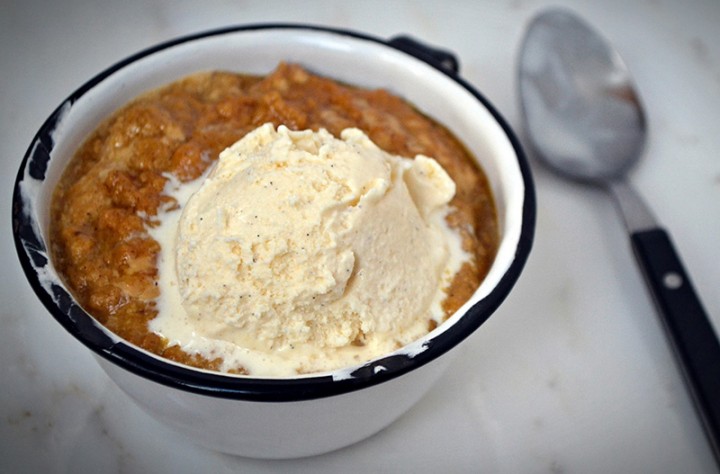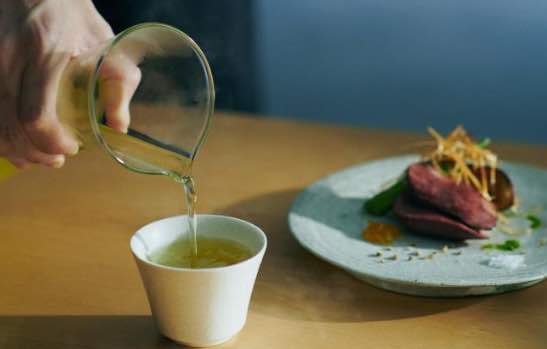History of Indian Pudding | Classic New England Dessert Recipe
joi
Topped with whipped cream and a sprinkling of cinnamon, Indian Pudding is a traditional New England recipe that embodies the flavors of fall. Learn more about Indian Pudding history, plus a recipe.
Indian pudding might not be pretty, but few New England desserts can rival its claim to fame as the most comprehensive of our regional sweet dishes. It evolved out of an initial British culinary tradition, which was then enhanced by Native American influenced necessity, and finally, flavored with the fruits of New England commerce.
Confused? Here’s how the pieces fit together.
Early colonists brought with them to America a fondness for British “hasty pudding” – a dish made by boiling wheat flour in water or milk until it thickened into porridge. Since wheat flour was scarce in the new world, hasty-pudding-deprived settlers adapted by using native cornmeal, dubbed “Indian flour,” and flavoring the resulting mush to be either sweet (with maple syrup or molasses) or savory (with drippings or salted meat).
In time, the dish evolved into one that was resoundingly sweet, with lots of molasses and additional ingredients like butter, cinnamon, ginger, eggs, and sometimes even raisins or nuts. Because New England was a stop in the “Triangle Trade” route of the 18th century (see Note below), New Englanders found themselves with an abundance of molasses on their hands. Never a wasteful group, they used it to sweeten everything from Anadama Bread to Baked Beans.
Indian pudding began officially appearing in American cookbooks in the late 1700’s. Early methods called for the dish to be cooked in a “slow” oven, meaning at a low temperature, for a long period of time. The pudding dish was placed in a large, shallow pan, into which a shallow amount of water was added. The water insulated the dish so it would cook very gently during its long cook time.
Here I used a recipe originally printed in a 1978 installment of Yankee’s “Best Cook in Town” feature. The recipe was recently included in Yankee’s cookbook, Best New England Recipes: Classic and Inspired Fare, so I knew I would be in good hands. This version omits the traditional water bath and cooks faster at a higher temperature.
Topped with some whipped cream and a sprinkling of cinnamon, Indian pudding embodies the flavors of fall, and reminds us of how a dish can evolve with its surroundings.
Note: The “Triangle Trade” refers to when enslaved people were brought from Africa to the Caribbean/South America, then sugar from the Caribbean/South America was shipped up to New England to be distilled into rum, and finally, the rum and other goods were sent back to Africa. Molasses is a by-product of distilling sugar into rum.
This post was first published in 2011 and has been updated.




